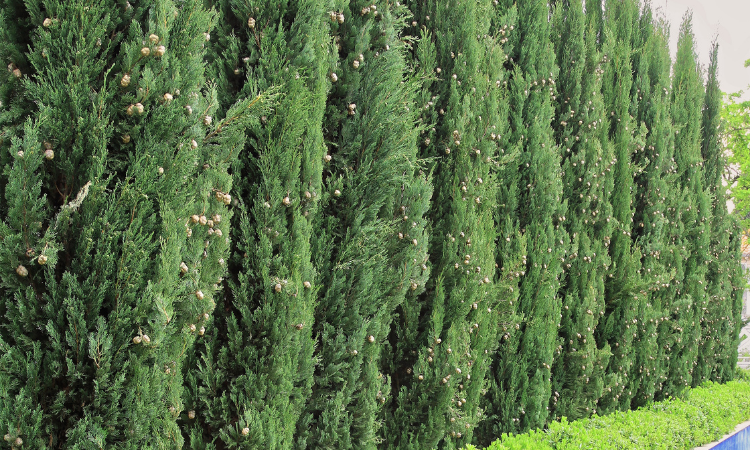Benefits and Maintenance of Hornbeam Hedges

Hornbeam Hedge is also known as Avenbok, and it is a semi-green species. These plants hold their leaves through the winter months that turn into rich autumnal shades. It boasts green catkins in late spring and autumn, turning into fruits that wildlife loves. They look similar to the beech hedging, but the Hornbeam has deeper veins and serrated edges. Avenbok plantations can even tolerate poorer growing conditions, and they are resilient as well. Poor growing conditions are high winds, shade, wet soils, and clay soils. Nevertheless, this Avenbok can grow around 20-40 cm each year, and you can even maintain it between 1-5 meters.
Hornbeam hedge works equally well as a single-species hedge. It works when combined with another native hedging. Avenbok is a space saver also. Hornbeam hedges are available in all root types. You can even purchase it as a pot grown, cell grown, root balls, bare roots, and instant hedging. Keep reading to know the benefits of Hornbeam hedges and how to maintain them.
Benefits of Hornbeam Hedge
Hornbeam hedge benefits the environment and even future generations. However, every plant is beneficial to the environment, and so is Avenbok. Many researchers acknowledged Hornbeam’s various uses. The glossy green foliage of the Hornbeam turns a coppery color in autumn. So, they show seasonal interest by doing so.
The ideal height of the Hornbeam is up to five meters. It makes a suitable privacy screen that reduces wind and noise entering your garden. Hornbeam hedge is an excellent single species hedge. But it is also true that it combines with other species because of being a member of a native feature. Another benefit of this Hornbeam hedge is that you can trim this species into several shapes and keep it tidy for a formal aesthetic. A planter can leave this plant to grow into a bushy form. Its bushy form gives a naturalistic look and looks excellent.
The deciduous and the rusted leaves that it holds provide cover to the plant in the winters.
Hornbeam hedge is wildlife-friendly. Its thick and dense foliage makes a perfect nesting site. In addition, the leaf holding of the plants in winter offers them a secure and safe habitat for wildlife in winters. In the spring season, it produces long catkins, which turn into small fruits feeding heaps of British birds. This Hornbeam is available in root types, as addressed earlier. It is excellent for clay and wet soils and will thrive in fully shaded areas. These plants can withstand windy sites, but Carpinus Betulus is not suitable for the coastal position.
Maintenance of Hornbeam Hedge
Formal hedges: These are the tidily clipped boundary type hedges. They comprise a single species, for instance, Hornbeam or Beech hedge, Privet, Thuja, etc. On formal hedges, you create a narrow shape at the top. It allows light to extend to the bottom of the hedge. Along with that, it reduces the chance of snow damage. A formal hedge has a depth of up to 60 cm and usually needs cutting twice a year for maintaining the depth.
You will need to use a string tied between two canes to guide the cutting. A template cut out of cardboard can also assist you in forming the right space. You will have to cut the hedges twice in winter and then in midsummer if it is deciduous. Hedges that are evergreen should be pruned late in the summer or late in the spring. If it is yew, then cut it once only during summer.
Informal hedges: Informal hedges have freedom in comparison to formal hedges. It displays its natural growing habitat. Few categories of these hedges are Dogwood, Pyracantha, Escallonia, Hazel, etc. These plants can be pruned to become shrubs when they reach their maximum height. But it also depends on their flowering time. Only once a year should this be done, and making sure that the size is accurate is essential.
Final Thoughts
Hornbeam hedges are the native species that attract people with their foliage. It can withstand an abundance of hindering planting sites. The Latin name of the plant is Carpinus Betulus. People mistakenly get confused between the Beech hedges and the hornbeam hedge. It happens because both the species have the same appearance. However, you can distinguish it with the deeper veins of these species. The growth rate of the Hornbeam is quite slow and can reach a height of about 6 m. When it becomes a fully grown plant, it can measure 25m×20m, and in 20 years of life, it will be about 11m×6m. However, those plants at their young growth stage have a pyramidal shape but become rounded as they mature. These species grow in partial shade or full sun. The most important aspect is that it is suitable for any soil. The hornbeam hedge prices differ according to the height and everything else. So, you can also plant them in your garden as they have too many benefits. I hope the blog helped you in learning about the Hornbeam hedges.




